In 1944, manager Maury Maverick sent this memo to the workers at his government agency:
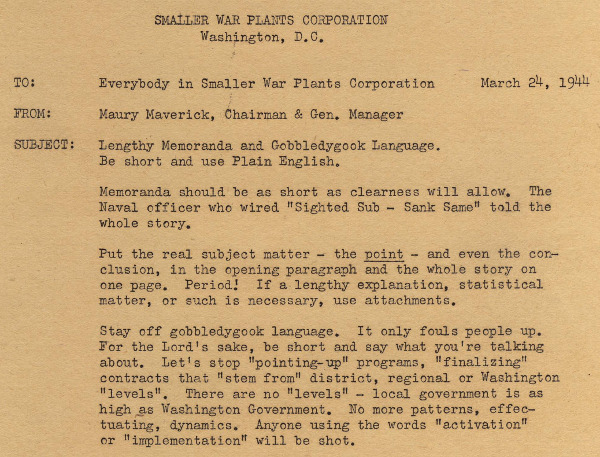
This is the first known usage of gobbledygook to refer to obscure jargon. It wouldn’t be the last.
(From the National Archives.)
In 1944, manager Maury Maverick sent this memo to the workers at his government agency:

This is the first known usage of gobbledygook to refer to obscure jargon. It wouldn’t be the last.
(From the National Archives.)
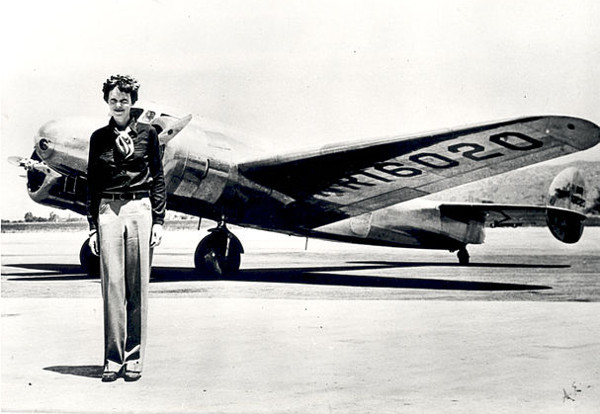
A poem written by Amelia Earhart in 1928:
Courage is the price that
Life exacts for granting peace.
The soul that knows it not, knows no release
From little things:
Knows not the livid loneliness of fear,
Nor mountain heights where bitter joy can hear
The sound of wings.
How can life grant us boon of living, compensate
For dull grey ugliness and pregnant hate
Unless we dare
The soul’s dominion? Each time we make a choice, we pay
With courage to behold the resistless day,
And count it fair.
“Please know I am quite aware of the hazards,” she wrote in a final letter left to her husband. “I want to do it because I want to do it. Women must try to do things as men have tried. When they fail, their failure must be but a challenge to others.”
In 1864 a photographer employed by Mathew Brady used a four-lens camera to record activity at a Union Army wharf along Potomac Creek in Virginia. The four images were taken in quick succession, so staggering them produces a crude time lapse of the events they record:
In effect they present a four-frame film, perhaps the closest we’ll come to a contemporary movie of life during the Civil War. Here are a few more, all taken in Virginia in 1864:
Union cavalry crossing a pontoon bridge over the James River:
Traffic in front of the Marshall House in Alexandria:
Union soldiers working on a bridge over the Pamunkey River near White House Landing:
There’s more information at the National Park Service’s Fredericksburg & Spotsylvania National Military Park blog.
British infantry sergeant Harry Neale says goodbye to his 10-year-old daughter Lucy, April 4, 1917:
At about six o’clock in the evening, my father called me in and said he’d got to go back to Kidderminster, back to barracks. ‘Will you walk with me a little way, just up the hill, will you come with me?’ Of course I would. He said goodbye to my mother, who was crying, and we went off down the road and then up this long hill. It was a ten-minute walk, I suppose, but we didn’t hurry, we just walked slowly up the hill and I really can’t remember what we talked about. I held on to his hand so tight, and when we got to the top, he said, ‘I won’t take you any further, you must go back now, and I’ll stand here and watch you until you’re out of sight,’ and he put his arms round me and held me so close to him; I remember feeling how rough that khaki uniform was.
‘You must go now, wave to me at the bottom, won’t you?’ I went, I left him standing there and I went down the hill and I kept looking back and waving and he was still there, just standing there. I got to the bottom and then I’d got to turn off to go to where we lived, so I stopped and waved to him and he gestured as much as to say, ‘Go on, you must go home now,’ ever so gently gestured and then he waved and he was still waving when I went, and that was the last time I ever saw him.
Badly wounded in battle, he died of dysentery in East Africa that October.
(From Richard van Emden, The Quick and the Dead, 2011.)
During World War II the British Special Operations Executive used poetry to communicate with its agents in enemy territory. The sender and receiver would agree in advance on a poem, and by numbering its letters they produced a simple cipher that could be used to transmit messages. Because both sides could memorize the poem, there was no codebook to lose, but the Nazis could break the code fairly easily, particularly if the poem was well known.
Realizing this, SOE codes officer Leo Marks began to introduce original poems of his own creation. He gave this one to French agent Violette Szabo in March 1944:
The life that I have is all that I have,
And the life that I have is yours.
The love that I have of the life that I have
Is yours and yours and yours.
A sleep I shall have, a rest I shall have,
Yet death will be but a pause.
For the peace of my years in the long green grass
Will be yours and yours and yours.
Marks had written it three months earlier in memory of his girlfriend Ruth, who had died in a plane crash in Canada. The poem became famous when it was read in the 1958 film Carve Her Name With Pride, about Szabo’s exploits in the war. Unfortunately, Szabo herself was captured, tortured, and killed before she could transmit any messages.
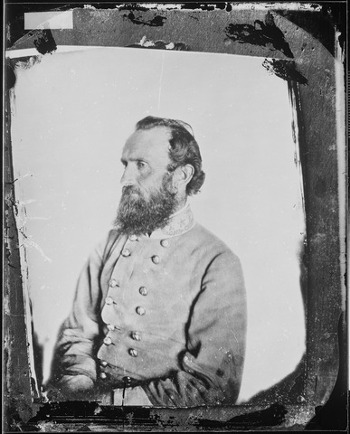
About noon, when Major Pendleton came into the room, he asked, ‘Who is preaching at headquarters today?’ He was told that Mr. Lacy was, and that the whole army was praying for him. ‘Thank God,’ he said; ‘they are very kind to me.’ Already his strength was fast ebbing, and although his face brightened when his baby was brought to him, his mind had begun to wander. Now he was on the battle-field, giving orders to his men; now at home in Lexington; now at prayers in the camp. Occasionally his senses came back to him, and about half-past one he was told that he had but two hours to live. Again he answered, feebly but firmly, ‘Very good; it is all right.’ These were almost his last coherent words. For some time he lay unconscious, and then suddenly he cried out: ‘Order A.P. Hill to prepare for action! Pass the infantry to the front! Tell Major Hawks –‘ then stopped, leaving the sentence unfinished. Once more he was silent; but a little while after he said very quietly and clearly, ‘Let us cross over the river, and rest under the shade of the trees,’ and the soul of the great captain passed into the peace of God.
— George Francis Robert Henderson, Stonewall Jackson and the American Civil War, 1903
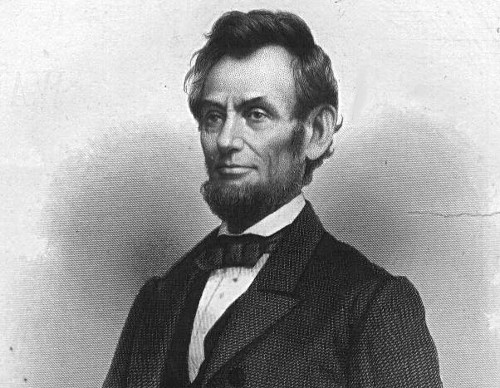
A letter from Abraham Lincoln to Fanny McCullough of Bloomington, Ill., whose father had died leading a charge in Mississippi, Dec. 23, 1862:
Dear Fanny: It is with deep regret that I learn of the death of your brave and kind father, and especially that it is affecting your young heart beyond what is common in such cases. In this sad world of ours sorrow comes to all, and to the young it comes with bitterer agony because it takes them unawares. The older have learned ever to expect it. I am anxious to afford some alleviation of your present distress. Perfect relief is not possible, except with time. You cannot now realize that you will ever feel better. Is not this so? And yet it is a mistake. You are sure to be happy again. To know this, which is certainly true, will make you some less miserable now. I have had experience enough to know what I say, and you need only to believe it to feel better at once. The memory of your dear father, instead of an agony, will yet be a sad, sweet feeling in your heart of a purer and holier sort than you have known before.
Please present my kind regards to your afflicted mother.
Your sincere friend,
A. Lincoln
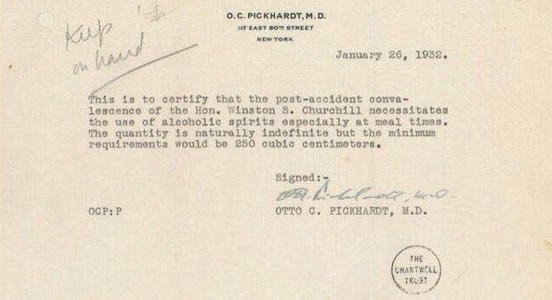
After being struck by a car in January 1932, Winston Churchill found himself laid up in New York at the height of Prohibition. He convinced his attending physician to write the prescription above.
“I neither want it [brandy] nor need it,” he once said, “but I should think it pretty hazardous to interfere with the ineradicable habit of a lifetime.”
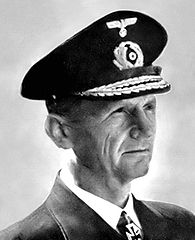
Captured by the British near the end of World War I, submarine commander Karl Dönitz was a prisoner at Gibraltar when news of the armistice came through. As he and a fellow German officer watched the celebrations “with infinitely bitter hearts,” a British captain joined them on deck.
Dönitz waved his arm in a gesture to encompass all the ships in the roads, British, American, French, Japanese, and asked if he could take any joy from a victory which could only be attained with the whole world for allies.
‘Yes,’ the Captain replied after a pause, ‘it’s very curious.’
In his memoirs, Dönitz wrote, “I will hold the memory of this fair and noble English sea officer in high regard all my life.”
(From Peter Padfield, Donitz: The Last Führer, 2013.)
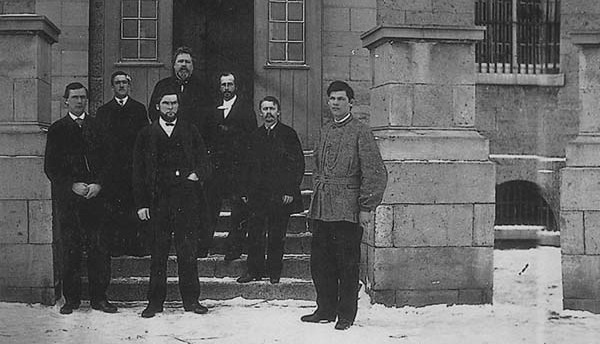
Seemingly safe in northern New England, the residents of St. Albans, Vermont, were astonished in October 1864 when a group of Confederate soldiers appeared in their midst, terrorizing residents, robbing banks, and stealing horses. In this week’s episode of the Futility Closet podcast we’ll tell the story of the St. Albans raid, the northernmost land action of the Civil War.
We’ll also learn about Charles Darwin’s misadventures at the equator and puzzle over a groundskeeper’s strange method of tending grass.